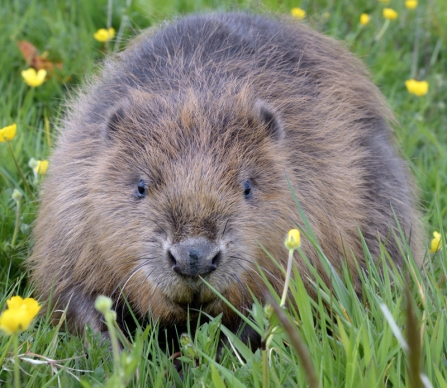
Photo by Nick Upton

Photo by Nick Upton
What would you name a beaver? Beaver McBeaverface? Justin? Sigourney?!
Farmer Chris Jones, whose land lies upstream of Ladock, a village that has been hit by flooding, plans to release two beavers into a fenced enclosure along a small stream. Experts in dealing with flood risk at the University of Exeter have studied the land, and believe by building dams the beavers will naturally slow the flow of water that could otherwise flood areas downstream.
The researchers will monitor the impact of the beavers on flooding and the quality of water being released, drawing on expertise gained from monitoring the release of Eurasian beavers at a site in Devon. The fenced project hopes to show that beavers can help create new wildlife habitat, make our streams cleaner and crucially, help to reduce flooding.
But to bring the beavers back the Trust needs to raise at least £15,000 over the next six weeks, which they hope to do through their Crowdfunder campaign at www.crowdfunder.co.uk/cornwallbeaver.
Dee Reeves, Cornwall Wildlife Trust trustee, says,
“We have two adult beavers, one male, one female, ready and waiting to make Cornwall their home – and they will need names! We have launched the ‘Name the Beaver’ competition as a bit of fun to help raise funds for the project. For a donation of just £25 our supporters can enter two names. The project team will whittle these down to 10 then we’ll ask the public to vote for their favourites through our Facebook and Twitter pages.”
The fundraising campaign is crucial to the success of the project. The beavers will be re-introduced to a specially-fenced five acre area at Woodland Valley Farm, upstream of Ladock village, just outside of Truro.
Chris Jones, the farmer at Woodland Valley Farm where the beavers will be released, said:
“We’ve done a lot of work getting the site ready for the first task of installing the beaver-proof fence. This will then be rigorously tested by beaver conservation experts to make sure they will be safe in their new home. I am hoping the beavers will transform the site by digging new ponds and water channels, making it much better for wetland wildlife. I’m expecting to see a lot more frogs, newts, toads and even birds and bats over the coming years. I’d like to thank anyone in advance who can make a donation to this project; it really is one of Cornwall’s most exciting wildlife stories.”
Ladock has suffered severe flooding in recent years and this project is designed to help.

Monitoring of the stream has already begun so that the project can determine the true before-and-after impacts of the beavers- something never done before in an intensively-farmed landscape like Cornwall. The results will help to determine if this long-lost species could once again become part of the Cornish landscape to help people combat flooding in a natural way. The project will build on research from other re-introductions in the UK and Europe.
Professor Richard Brazier of the University of Exeter, a hydrologist who is also monitoring the release of beavers in Devon, said his study of the Cornish site will investigate whether the beavers’ behaviour could help create a natural flood barrier, and clean the water as it flows through the site too.
Professor Richard Brazier said,
“We have monitored the woodland valley for a year and a half and we understand the flood regime well. We are ready to introduce the beavers and see what they can do to reduce flooding. We expect the beavers will build dams, slow the flow of water and store water, releasing cleaner water onto the land.”
If you would like to make a donation and enter the ‘Name the Beaver’ competition visit www.crowdfunder.co.uk/cornwallbeaver.
For more information about the project please visit www.cornwallwildlifetrust.org.uk/beaverproject - where you can also follow the Beaver Blog, call the Trust on (01872) 273939, or find them on Facebook @cornwallbeaverproject or Twitter @cornwallbeaver.